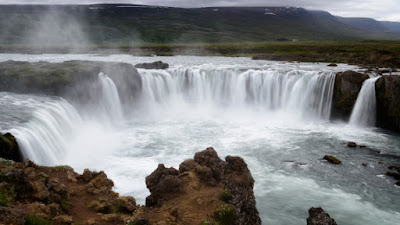New Research in Waterfall Formation
We admire waterfalls, sometimes captivated by the sound and motion. How many of us wonder how they form in the first place? Secular scientists, presupposing the deep time that Darwin requires and they provide, have said that the biblical timeframe is not possible. Recent research throws mud in their eyes.
Streams or rivers have one or more knickpoints and knickzones. They supposedly formed by gradual plate tectonics, climate change, earthquakes, and other external forces. However, the processes that form waterfalls is unknown. Research with a new model shows that waterfalls can indeed be formed quickly, and this fits with Genesis Flood models.
 |
| Credit: StockSnap / Joe deSousa |
Secular scientists make many assumptions about nature that lead to conclusions that contradict the Bible’s history. For example, they once assumed that clay particles settle very slowly according to Stokes Law, which means that the claystone and mudrock in the sedimentary rock record, which make up over 50% of the sedimentary rocks, would take millions of years to form. However, scientists have discovered that clay particles coagulate into floccules, called flocculation, which is a very common process in nature. This means the clay particles would have deposited much faster, and that there is no problem with the biblical timescale. Another assumed belief recently challenged is that waterfalls are the result of past tectonics or climate change.To dive into the rest of the article, see "Waterfall formation may not need tectonics or climate change".